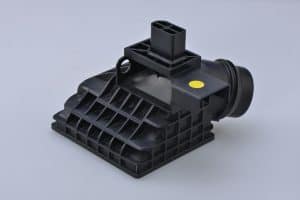Key Takeaways:
- Plastic injection molding is a versatile manufacturing process.
- Advanced techniques can lead to cost savings and improved product quality.
- Automation is revolutionizing the plastic injection molding industry.
- Sustainable practices are becoming increasingly important.
Introduction to Plastic Injection Molding
Plastic injection molding is a commonly employed manufacturing technique that yields a wide range of plastic components, from simple household items to complex parts utilized in industrial settings. Plastic can be injected into a specially-made design mold to solidify and form, allowing manufacturers to create various shapes and sizes with extreme repeatability and precision. This manufacturing process is highly favored because of its accuracy, efficiency, and ability to make large quantities of sturdy, uniform products without sacrificing speed or quality. The quality and cost-effectiveness of the parts produced can be maximized by adequately designing the mold structures.
Advanced Techniques in Plastic Injection Molding
Plastic injection molding is evolving swiftly, with numerous advanced techniques emerging to enrich the process further. Gas-assisted injection molding, for instance, injects nitrogen gas into the mold, creating hollow sections in the part. This reduces material use, lowers weight, and decreases cycle times. Multi-shot molding involves injecting multiple materials or colors into the same mold, resulting in a single component with diverse functional and aesthetic properties. On the other hand, co-injection molding introduces two different materials into the same mold sequentially, allowing for combining distinct material properties in a single product. These sophisticated methods significantly enhance the final products’ durability, performance, and visual appeal while reducing wastage and ultimately leading to cost savings.
Benefits of Automation
Automation in plastic injection molding is reshaping the industry landscape, providing unprecedented productivity and efficiency. Robotic arms and intelligent sensors are examples of automated systems that perform precise and repetitive tasks more quickly and accurately than human operators. By integrating automation, manufacturers can ensure consistent product quality, minimize the risk of human error, and significantly reduce labor costs. For example, robotic arms can handle complex tasks such as part removal and insert loading, while intelligent sensors monitor and adjust parameters in real time to maintain optimal conditions. The move towards automation also streamlines production workflows, enabling faster turnaround times and accommodating larger-scale operations. Incorporating automated systems in injection molding can result in substantial productivity gains and enhanced operational efficiency.
Sustainable Practices in Molding
Increasingly, sustainability is becoming a pivotal concern in manufacturing, including plastic injection molding. The growing awareness of environmental impact is prompting manufacturers to adopt more sustainable practices. One significant approach is the utilization of biodegradable and bio-based plastics, which decompose more readily than conventional plastics, thus reducing environmental footprint. Additionally, many companies are implementing recycling initiatives to reutilize scrap plastic and reduce waste. Energy optimization during molding, such as using energy-efficient machinery and optimizing cooling times, further contributes to sustainability goals. Educational programs and certifications related to sustainable practices are also rising, supporting the transition towards greener manufacturing.
Future Trends
The future of plastic injection molding is brimming with innovation, driven by the continuous quest for efficiency, quality, and sustainability. Emerging technologies like 3D printing and advanced simulation software are revolutionizing design and prototyping, allowing for rapid development and testing of molds. Mold design and customization are now possible thanks to 3D printing, which makes it possible to create intricate mold shapes that would be difficult to produce with conventional techniques. Furthermore, by anticipating and addressing potential problems in real time, the integration of artificial intelligence (AI) and machine learning is poised to revolutionize the manufacturing process, improving process control and decreasing downtime. AI-driven analytics can optimize several variables, maintaining maximum productivity throughout production. The plastic injection molding industry is primed for a future marked by increased innovation, sustainability, and operational excellence as these technologies develop and become more widely available.

